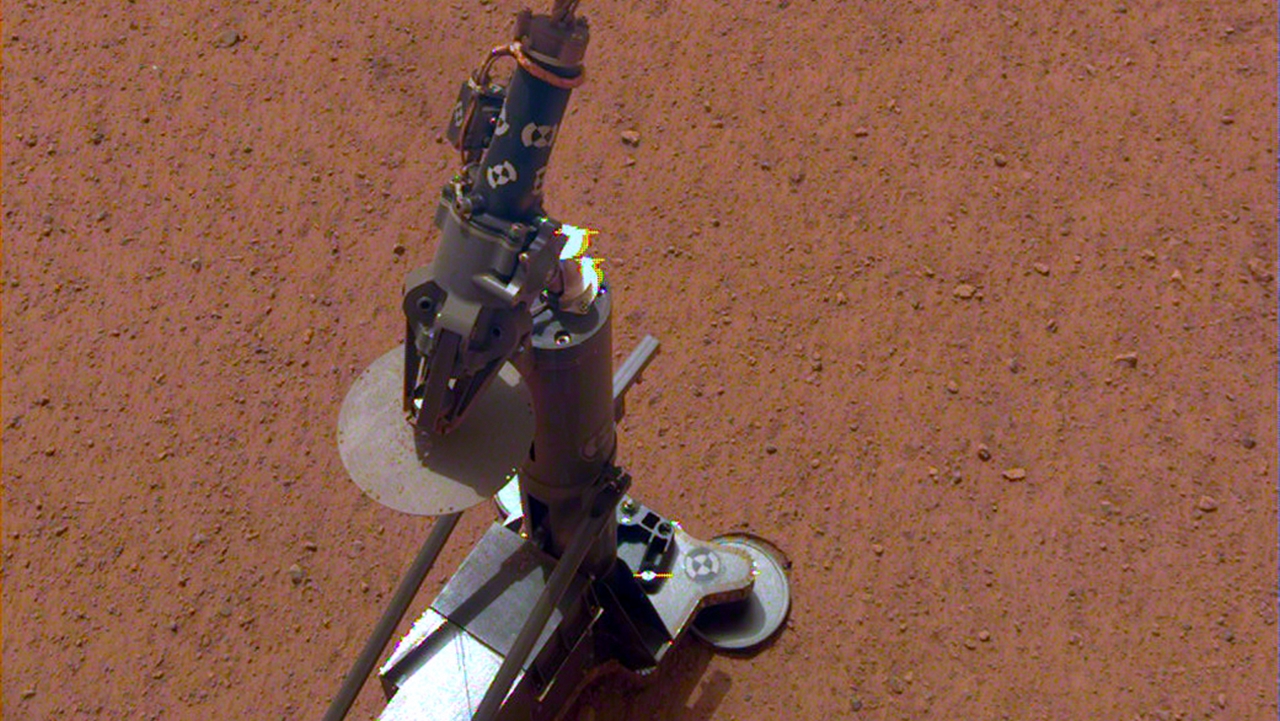The 'mole' fails: NASA gives up measuring the internal temperature of Mars
Source: HW Upgrade added 17th Jan 2021
NASA raises the white flag and gives up to measure the temperature of Mars. The “mole” that had to place a thermal probe 3 meters deep to measure the heat loss of the Red Planet did not go beyond 3 centimeters.
by Manolo De Agostini published 17 January 2021 , at 08: 01 in the Science and Technology channel
Nothing to do, the probe thermal developed by the German Aerospace Center (DLR) for the lander InSight of NASA on Mars failed to hit its target , even if it tried to 28 February 2019. The probe, called “mole” (mole), had the task of “pierce” his Martian up to 3 meters deep to collect information on internal temperature of the Red Planet. Unfortunately, as announced by NASA itself, “the unexpected tendency of the ground to clump has deprived the mole of the friction it needs to position itself at sufficient depth “. Moving the mole is not possible and should not have encountered a stone, as explained by the space agency in a Q&A.
The mole only pierced the surface by 2 or 3 centimeters , and even the last attempt on January 9 failed. Scientists tried to use a dustpan on InSight’s robotic arm to scrape the soil on the probe and compress it to provide additional friction, but then others 500 shots without any progress have acknowledged the impossibility of solving the problem.
Part of an instrument called Heat Flow and Physical Properties Package (HP3) , the probe is a long post driver 40 centimeters connected to the lander by a cable with integrated temperature sensors designed to measure the heat loss of Mars as soon as it reaches a depth of at least 3 meters. “We gave everything we had, but Mars and our heroic mole remain incompatible ,” said Tilman Spohn of the DLR. “Fortunately, we have learned things that will serve future missions who will attempt to dig underground”.
No mission before InSight had tried to make such a hole in the Martian soil, the Phoenix lander had in fact collected a surface layer, without going further. Entering the planet’s subsoil is useful for several aspects, including gathering useful information for future astronauts looking for ice water and understanding if the soil is suitable for supporting microbial life.
While remembering that solving problems from millions of miles away is an incredibly difficult undertaking, it is clear that there was something that went wrong. The mole project was in fact based on the soil seen in previous missions to Mars (mainly sandy), but once on the field he found a very different terrain than expected. In these two years the scientists have worked to adapt the instrument to the new circumstances, without success.
In misfortune, there remain some positive aspects (in this regard the NASA recently extended the InSight mission): More information about the ground and a greater understanding of how Insight’s robotic arm works and how to use it for unscheduled tasks. It’s all hay to put in the farmhouse in view of future missions: space history is made up of great achievements, but to get there you also need some missteps.
Follow us on our Instagram channel, lots of news coming soon !
